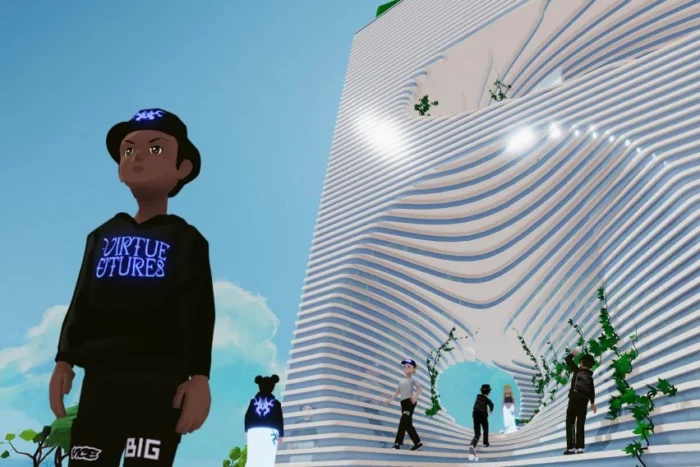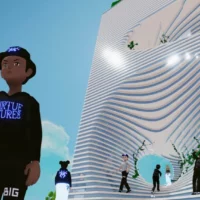International architectural practice Bjarke Ingels Group (BIG) designed its first metaverse building; a virtual headquarters office for the employees at media company Vice Media Group—to be the first high-profile firm to design in the metaverse.
Named “Viceverse”, the office is located on the Decentraland platform, where investors can deal with each other freely rather than within a centralized exchange. The office will serve as Vice Media Group’s virtual lap for innovation, allowing its employees to work on digital projects in the metaverse, including Non Fungible Tokens and more.
An Experimental Playground by BIG
According to Morten Grubak, worldwide executive creative director of innovation at Vice Media’s creative firm Virtue Futures, Viceverse is an “experimental playground.” The workspace was designed in collaboration with Bjarke Ingels Group (BIG), according to Grubak, and will stimulate innovation at the multi-platform media organization.
“It’s an extremely organic building, we can install an entire floor in a day so we see it as an experimental playground and canvas on which to build, […] Teams can experiment with NFTs, Decentralised Autonomous Organisations (DAOs) and Web 3.0, applying insights directly for brands eager to make an impact,”
—Grubak said
The workspace was built to resemble a white skyscraper with an undulating exterior, with many levels accessible via a central tunnel. Employees can hold meetings and collaborate with colleagues from all around the world in the new headquarters.
According to Grubak, the space showcases a range of digital experiments and has plenty of hidden extras for curious explorers — including a direct route for young creatives to reach a selection of highly acclaimed global Meta-Mentors, and it will also serve as a launchpad for the digital field research into the sociology of digital communities.
The workplace is located in Decentraland, an open-source meta-reality in which people construct unique avatars to represent their physical selves. Other businesses have also set up shop in Decentraland, including architecture and design company Roar, which revealed earlier this year that it had purchased two plots of land for a digital showroom.
Viceverse is Vice Media Group’s first metaverse workplace, and it gives the company’s 25 offices throughout the world a new dimension. Viceverse, according to Grubak, allows the brand to not only establish its presence in the metaverse but also to explore what kind of work is possible outside of the actual workplace.
“The brief we gave BIG was to present something that is pushing the boundaries of physical constraints, […] the arrival of Vice Media Group allows its borderless creative workforce to come together virtually for the first time in Decentraland,”
Grubak added
Metaverse workplaces enable remote teams to cooperate creatively— a metaverse is a parallel virtual environment in which people communicate with one another via digital communications. Vice Media isn’t the only one who’s dabbled in the field. Facebook stated in October that it would rebrand as Meta and focus on creating products for the metaverse.
A flurry of international businesses quickly followed suit, including Nike, which announced the acquisition of RTFKT, a digital design firm that creates trainers that can be worn across many online realms. Just recently, the Melbourne-based platform uses non-fungible tokens (NFTs) to turn projects into digitally and physically distinct sources that can subsequently be sold for long-term profit. The strategy addresses the rising costs of working with architects, which are becoming increasingly out of reach for the average person or community.
- Courtesy of Vice Media
- Courtesy of Vice Media








